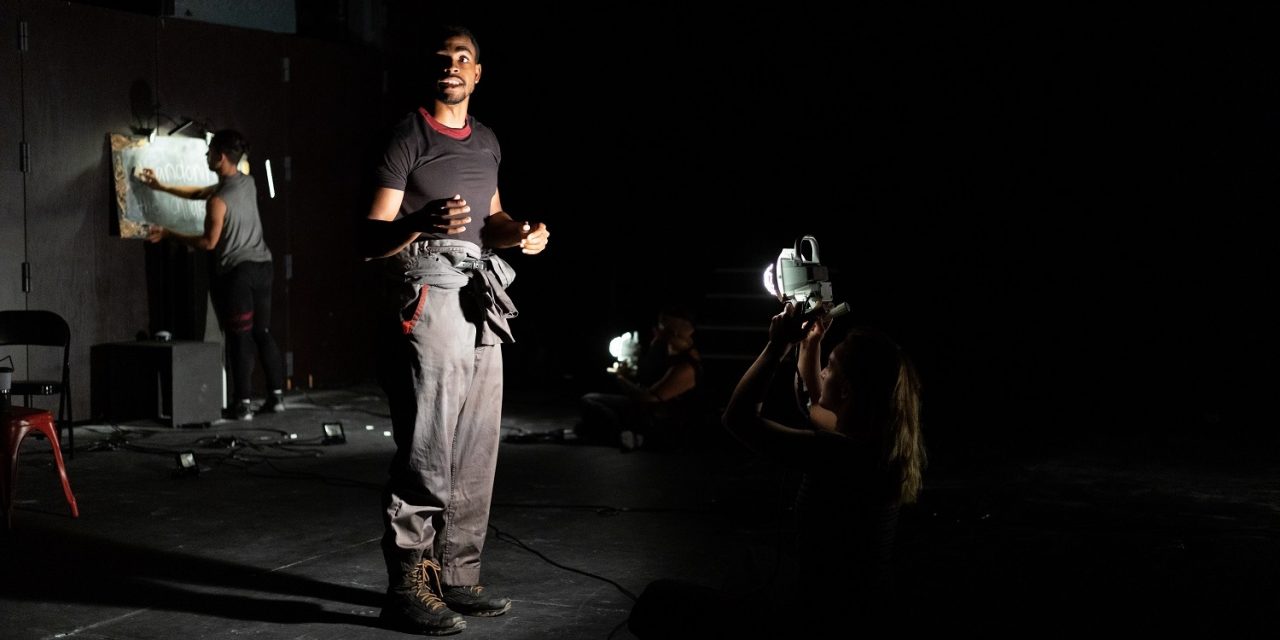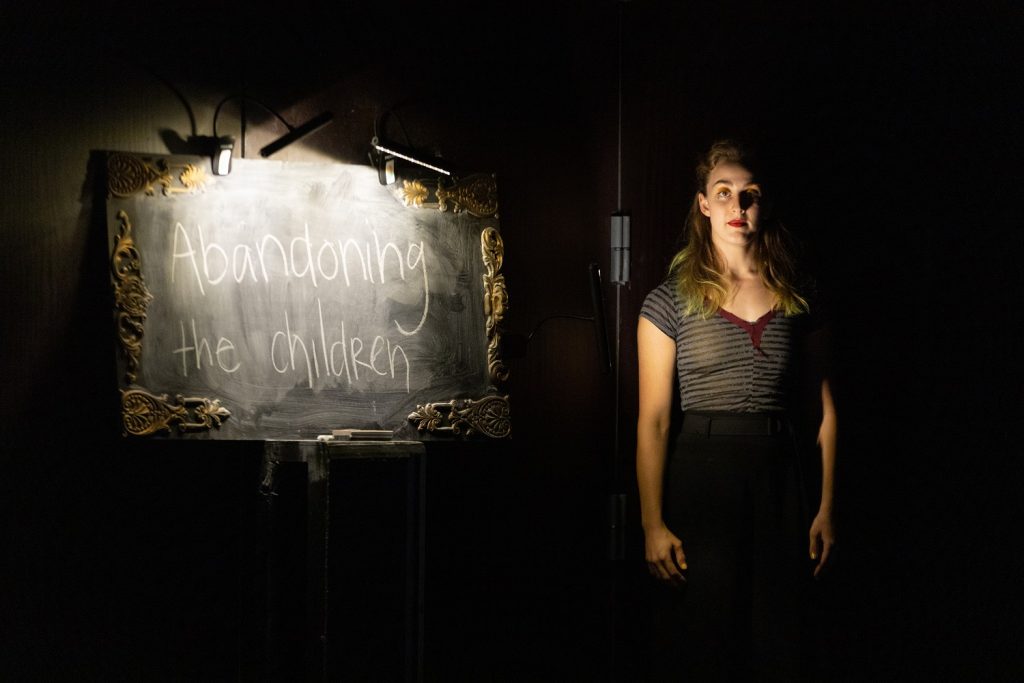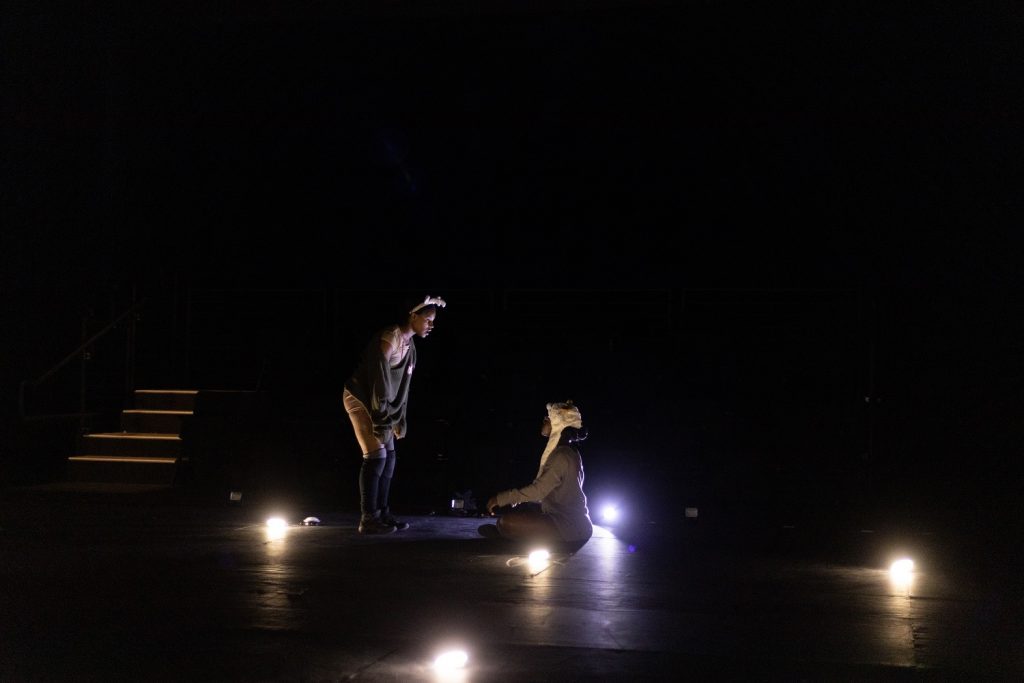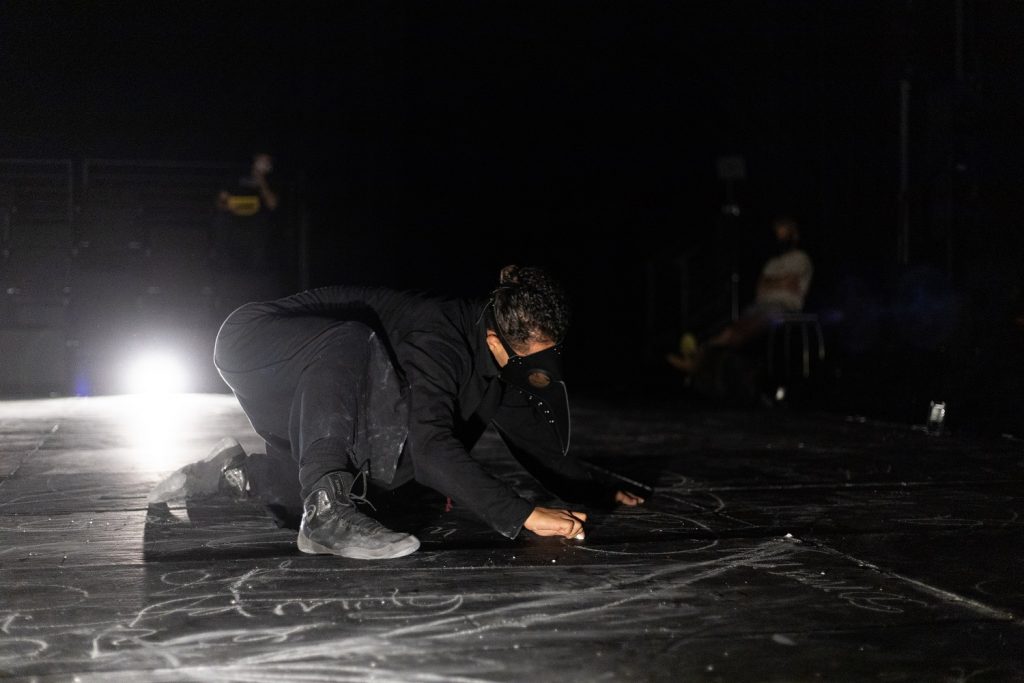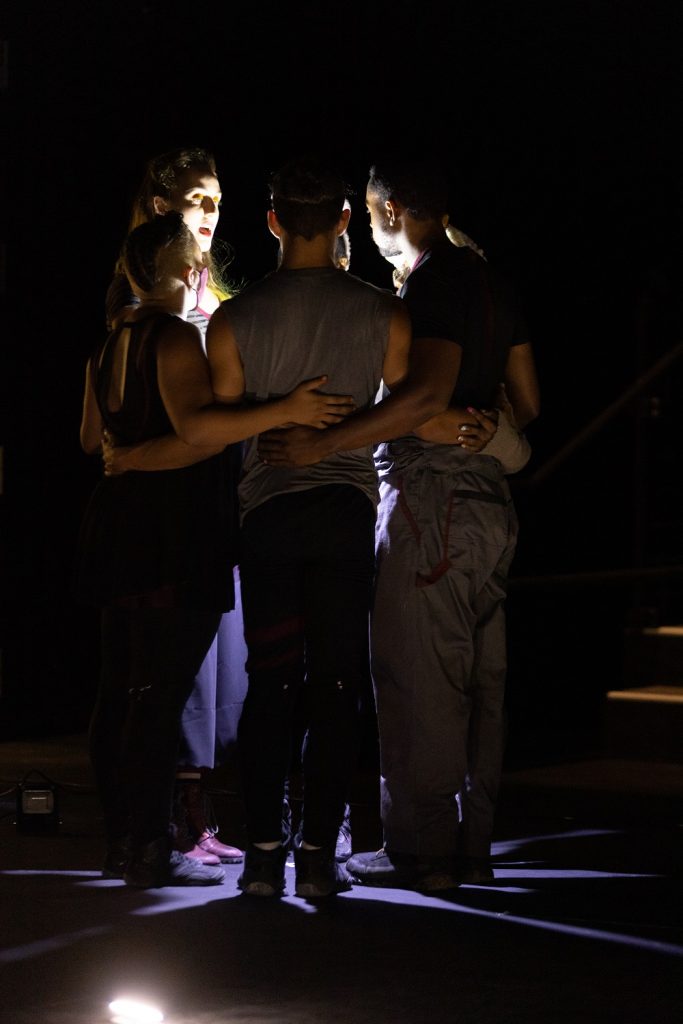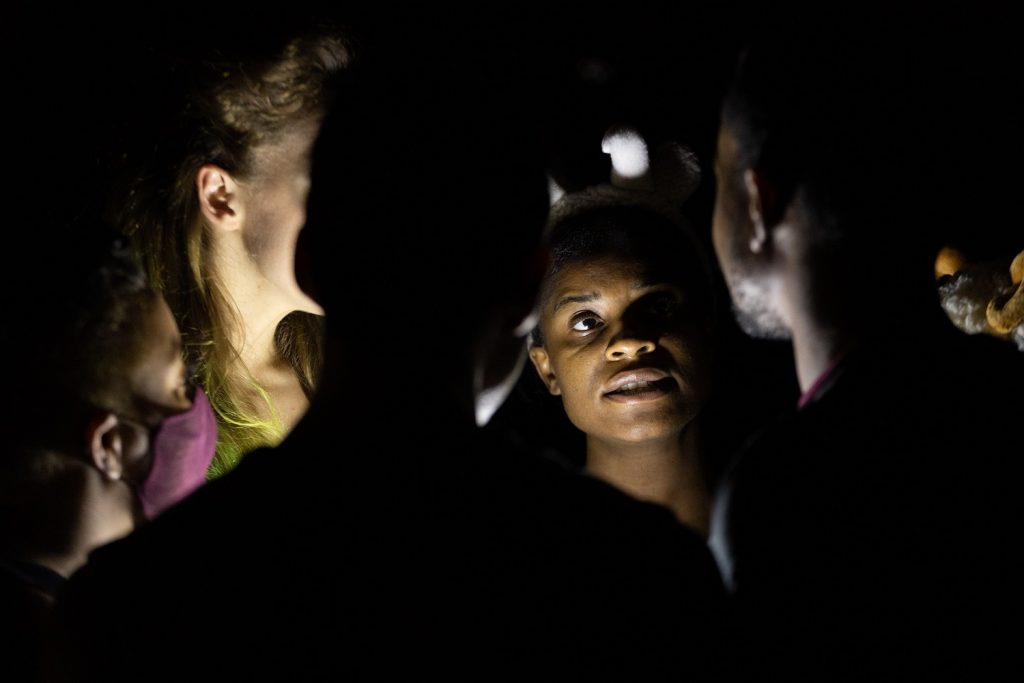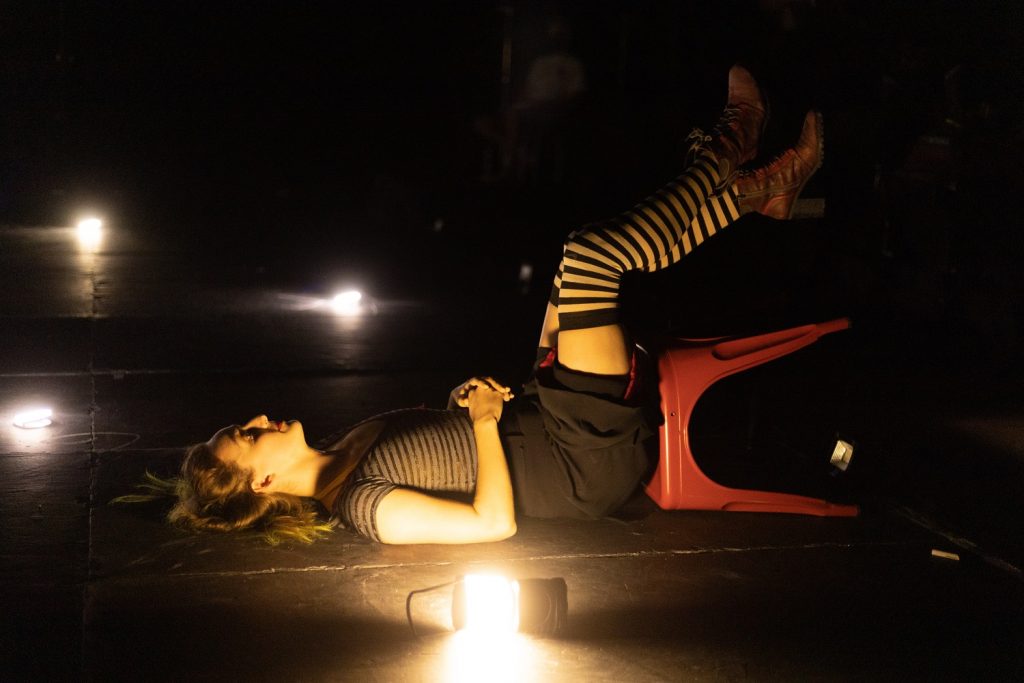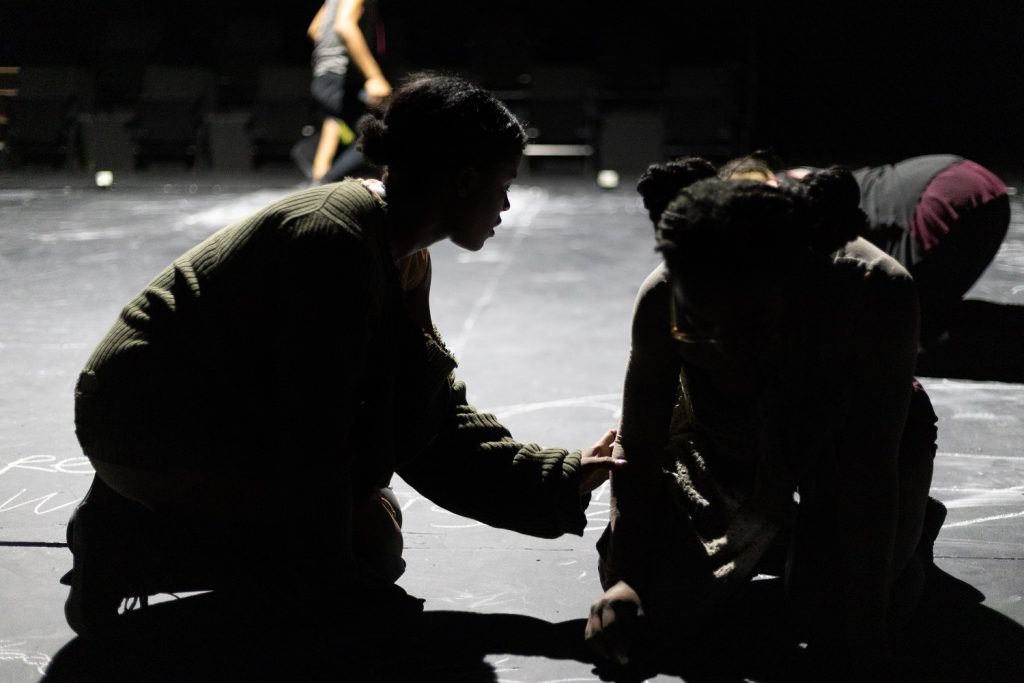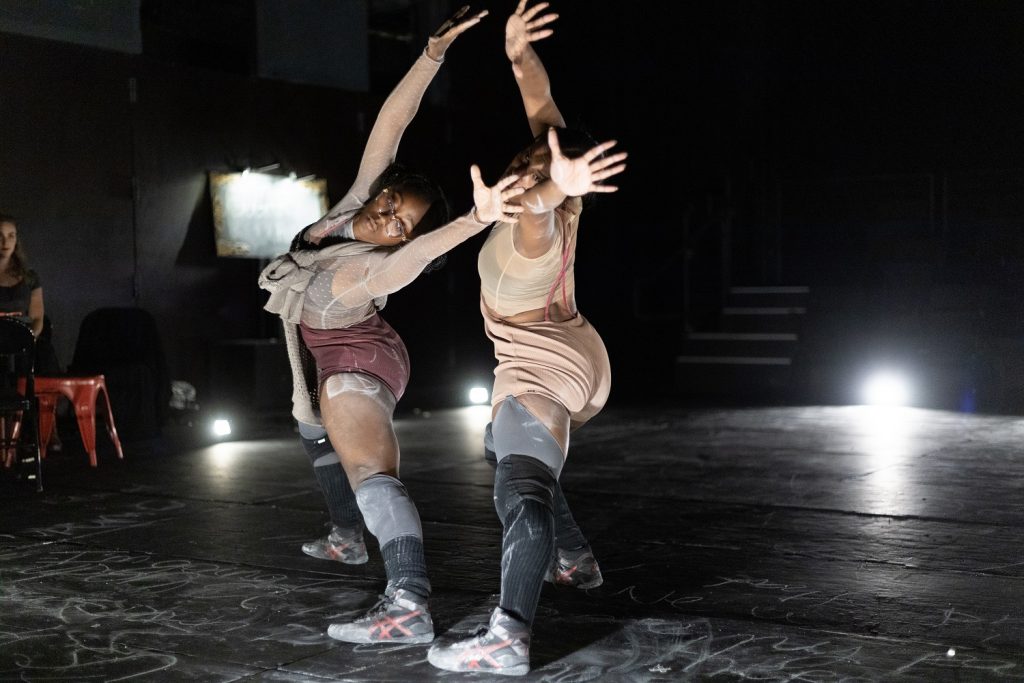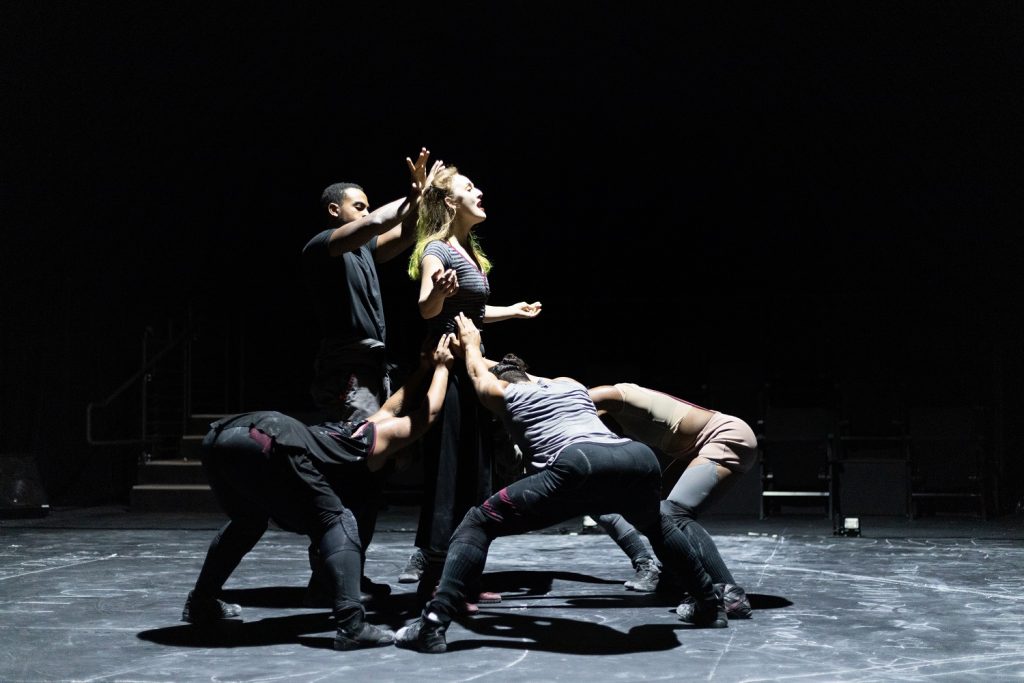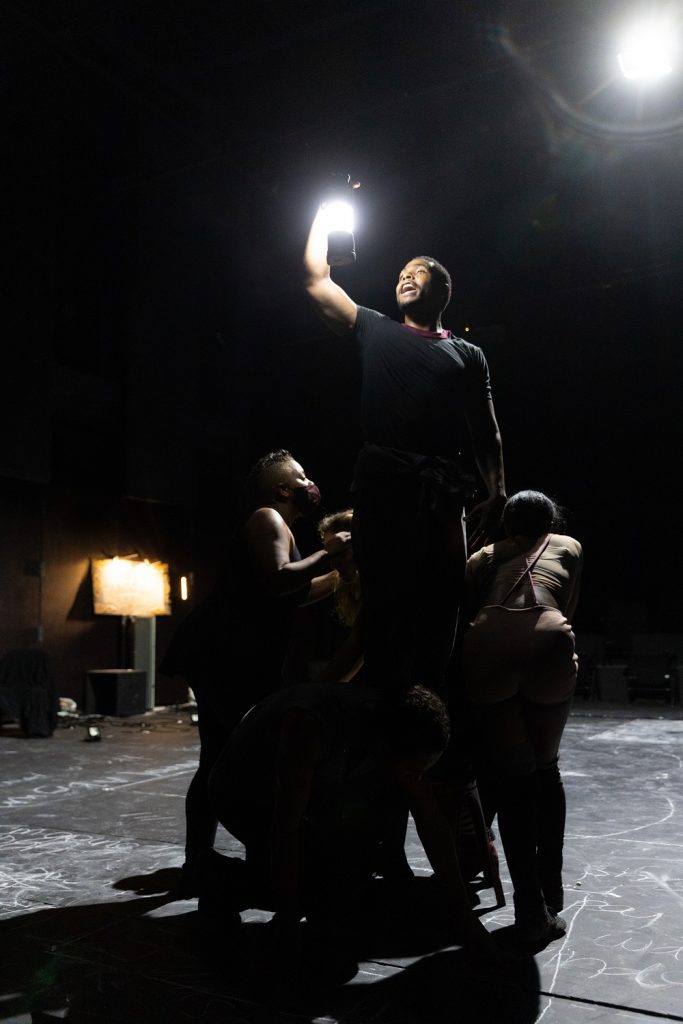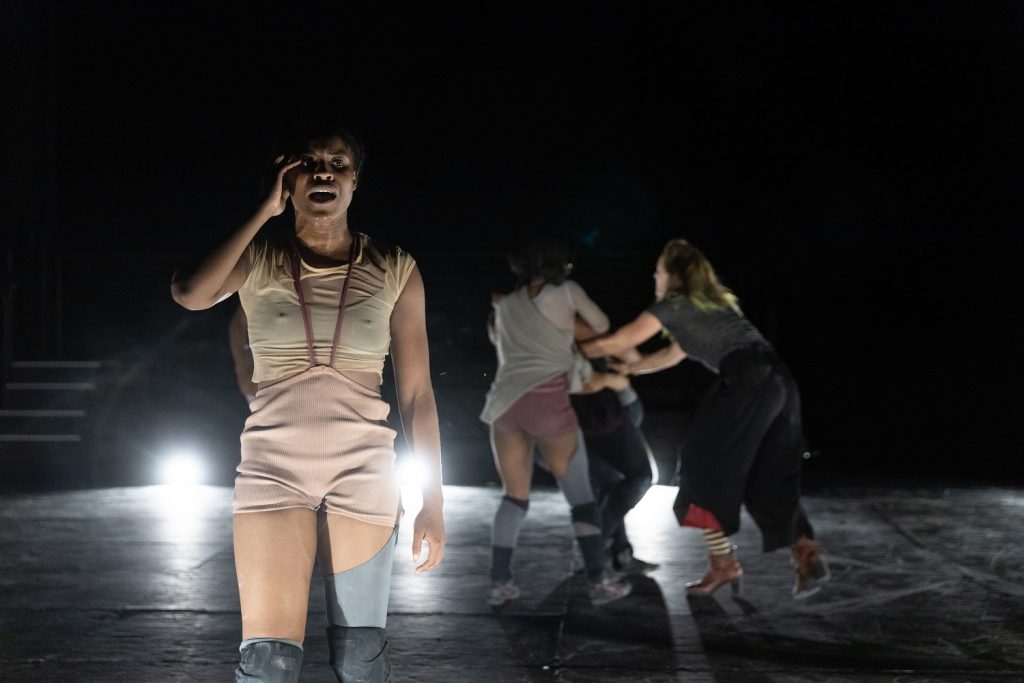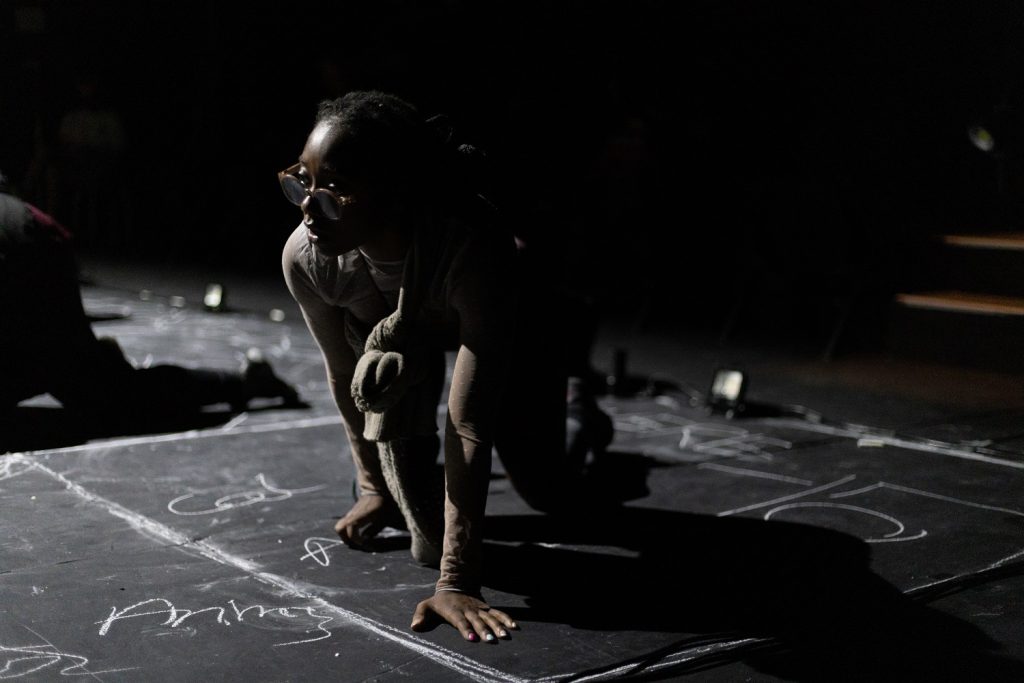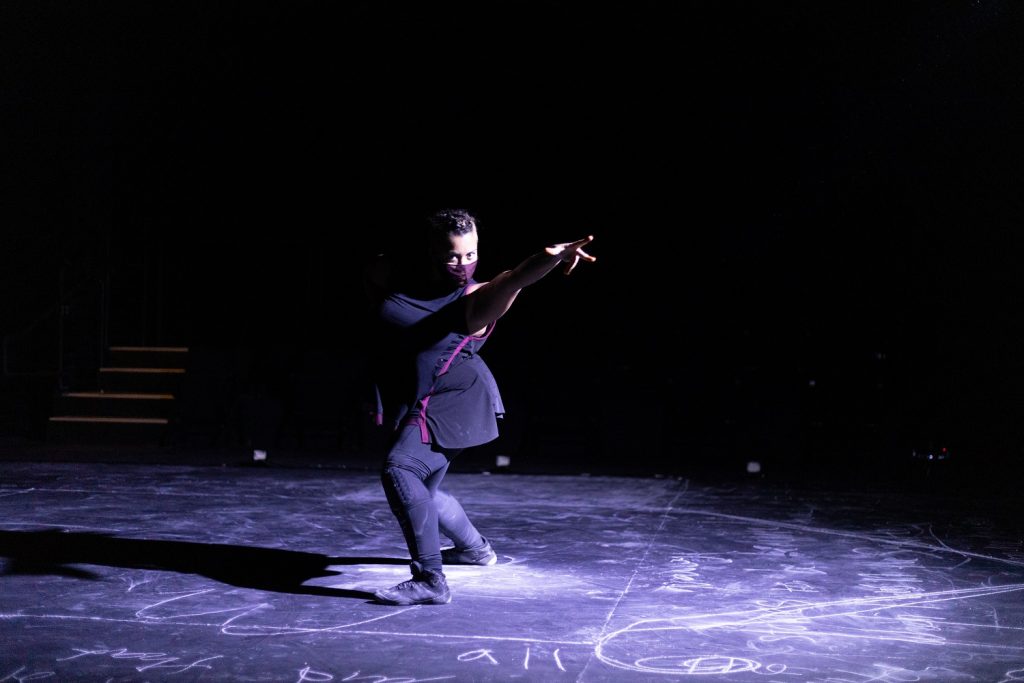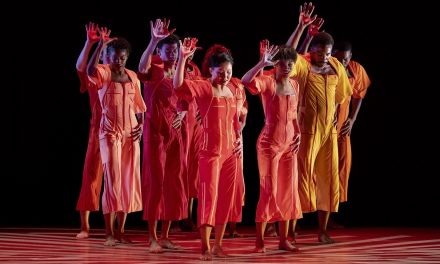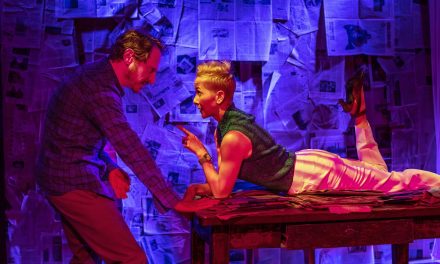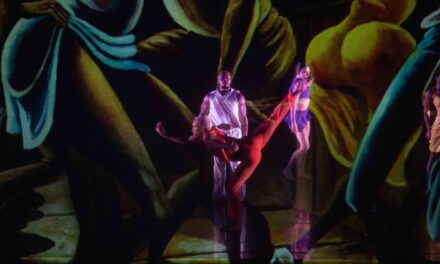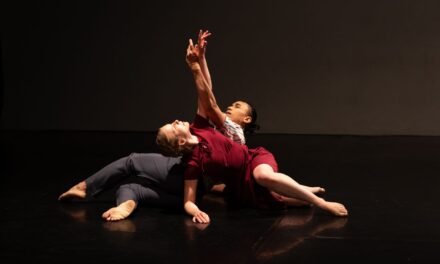Bear with me while I get a little emotional here: last night was my first time in a theater since… well, since I sat in on Rosanna Gamson/World Wide’s rehearsal for Sugar Houses in early March of 2020. I cried, obviously. So even though a lifetime of sorts has passed, this show has been a pandemic bookend for me; the company essentially did a full run-through in that rehearsal and didn’t perform the piece until opening last night at REDCAT.
After visiting that rehearsal, I was so impressed by the cast and crew—not just that each of them are exceptionally multitalented—but by their commitment to the work, and by Gamson’s expert ability to draw excellence from all while maintaining a warm, constructive directing presence. I followed as the show was postponed (several times) and even through a brief stint of character studies the company completed via Instagram accounts. What you’ll read here is an amalgamation of my review from Thursday night, and of my interviews from last year, about 16 months ago.
March 2020
Rosanna Gamson’s rehearsal space has no fancy stage lights this time around. But that’s not to say that her cast is dancing in the dark; they’re on their way to mastering a portable light system made up of flashlights and lanterns. Everything packs nicely into two suitcases, Gamson tells me, for maximum “tourability.” She’s working with longtime collaborator and production designer Tony Shayne to optimize the specifics.
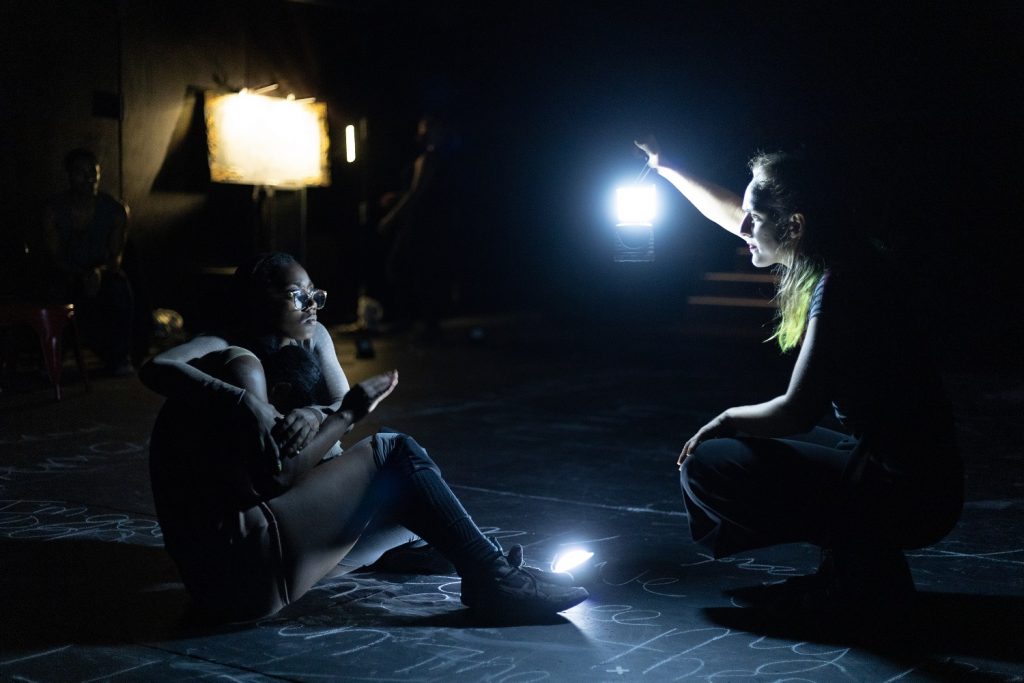
RGWW – “Sugar Houses” – (L-R) Emara NeyMour-Jackson, Kayla Johnson (crouching), Clementine Gamson Levy – Photo by Rafael Hernandez
“We said we weren’t going to use any theatrical lighting, but instead utilize all flashlight and LED to pull less electricity,” she said. “It’s both in the interest of making piece portable and built out of the idea that you can suspend disbelief enough to see the cast make the setting, the lights, themselves.”
You see, Gamson’s fairytale spin on Hansel and Gretel for her new work Sugar Houses has been in the works for several years, during which she has worked between Poland and the United States. In her research, she has taken inspiration from Jerry Grotowski’s “Towards a Poor Theatre,” which tasks the performer with erasing the fourth wall by elimination of gimmicks. There are no elaborately designed crutches: instead, the performer creates the whole environment from nothing.
“It’s up to the performer to be able to do anything, and to make the world out of nothing in the service of the play,” Gamson explained.
In order to guarantee the most immersive world, she has assembled a cast of multihyphenates, dancer-singers and actor-dancers and more—even sound designer Simon Greenberg is also a DIAVOLO dancer-acrobat. Performers Clementine Gamson Levy and Ricco Ross (note: in July 2021, Terry Wayne Jr. takes Ross’ place) bring dialogue-heavy roles to the narrative, but they’re dancing with the others more often than not. This production’s members of Rosanna Gamson/World Wide come primarily from a cohort of CalArts dance students with holistic performance training: Kayla Johnson, Mallory Fabian, Kearian Giertz, Dion Pratt (in July 2021, replaced by Emara NeyMour-Jackson), and understudy/stage manager Paige O’Mara.
Gamson’s choice of Hansel and Gretel was actually spurred somewhat by the classmates’ sibling bond. Some of them lived together at the time of the piece’s conception. Gamson also references her own sibling relationship in the work:
“I had a brother, we’re very close and I had a very stormy rebellious childhood adolescence, that was very turbulent. He was my ally… was a different kind of saving my life. I was in the protective role in that relationship: in the fairytale, Gretel kills the witch and loses innocence on behalf of her brother,” she told me. “That feels very political—all our parental figures have abandoned us; nobody is taking care of us and we are left in this very dark woods to fend for ourselves. On a macro level, we’re also in the state of the abandoned child.”
Gamson created this work with a political awareness that only became more relevant during the year it was dormant. The process brought more of those questions forth, and in the latest iteration it’s clear that she spent a lot of time with them during the isolation period. In that early rehearsal, she explained:
“During this past four years, the rise of antisemitism and white supremacy, and white fragility—white women crying, and how am I complicit in it and perpetuating this sort of… undermining of empathy in the interest of… how am I using my privilege? Those all sort of came together because Hansel & Gretel and all of the Grimm fairy tales were used to propagandize children to dehumanize Jews (witches as the Jewish stereotype), and to make it okay to throw them in the oven. Which happened,” she said.
The work combines the fairy tale with historical accounts of the 1317 famine in Germany and beyond but is obviously applicable to much more current instances of hatred and genocide. Terry Wayne Jr., who narrates for the audience throughout the work, addresses this directly at the evening’s three-quarter mark.
“Who will be the witch next?” he begs.
And while the script here is a little heavy-handed for my taste, the message is spot on. This work wouldn’t have gone through the pandemic period, the Black Lives Matter surge, the spike in Asian American hate, if they hadn’t made space for the last year. Gamson and cast have adapted Sugar Houses well for this new resurgence, but at the same time, it’s been universal since the beginning.
“There’s a rise in bias and hate crimes, and it seems like it’s getting normalized, to great peril. I also was super interested in horror movies as the new political vehicle. I’m a big fan of all of these, and it does seem like it’s reaching a big audience to make really strong political gestures with an impact,” Gamson told me then.
July 2021
She’s successful in making an impact. Not only does Gamson employ every bit of her knowledge and years–a lifetime–of research in this work, but she also builds a world out of this bare-bones stage setup with an incredible cast. No detail is left untouched: horror writer and linguist Brian Evenson worked with them to create an eerie new language, with bits of German, Yiddish, Turkish, and more, and Mona Heinze served as dramaturg.
Through the horror of the story, there is still such a cathartic release in seeing these individuals physically move through the space in front of me. Giertz brought me to tears with a soul-baring solo, dancing physically-near-impossible choreography while singing a haunting Wayfaring Stranger with such smoothly grounded breath.
I was forced to conclude that the cast was marathon training alongside their regular rehearsals, because every member provided stunning vocals after dance or fight choreography that should’ve left any mover breathless – let alone a mover who has been off the stage for over a year. Of course, some of this is to the credit of vocal coach and arranger Fahad Siadat (with help from Dara Weinberg). War songs are sung with layered harmonies and solo vocals are sampled into the soundscape.
Greenberg’s sound design essentially gives the work permission to have almost no physical set. His soundscapes pluck viewers from finished scenes and drop them into new places in an instant, prompting a sort of auditory orientation that told bits of the story without words. The rest of the scenery is made of constantly changing chalk marks, and cast members lighting each other with portables (plus a briefly utilized “starry night” portable setup by Megan Fowler-Hurst). Costumes by Lilia Lopez are all-purpose, switching in and out of accessories that allow everyone to play several roles.
The choreography, finally, is demanding in the most beautiful way. The dancers haven’t quite settled into it yet, which is absolutely standard for opening night and will resolve itself in the inevitable tour to follow. But it is so wonderful to see them negotiate this challenging work with their bodies, to see the effort before your eyes and to see each dancer battle the movement until their victorious final bow. Fabian is powerful and embodies her witchy character fearlessly; NeyMour-Jackson and Johnson are playful and limber as Hansel and Gretel. Gamson-Levy and Wayne anchor the cast theatrically and hold their own in a hilarious slow-motion fight scene and quippy moments of dialogue that break up the horror. Giertz stands out with a sure softness that rounds out the cast.
Each cast member is an absolutely commanding performer, and combined they are much more than an ensemble; they are the story itself and simultaneously they are brilliantly themselves. And that is what I so have missed seeing on the stage.
Sugar Houses is sold out this weekend, but you can stream the Sunday performance at 4:00 p.m. PST through REDCAT.
To visit the Rosanna Gamson/World Wide website, click HERE.
Written by Celine Kiner for LA Dance Chronicle.
Featured image: RGWW – Terry Wayne Jr. in “Sugar Houses” – Photo by Rafael Hernandez

